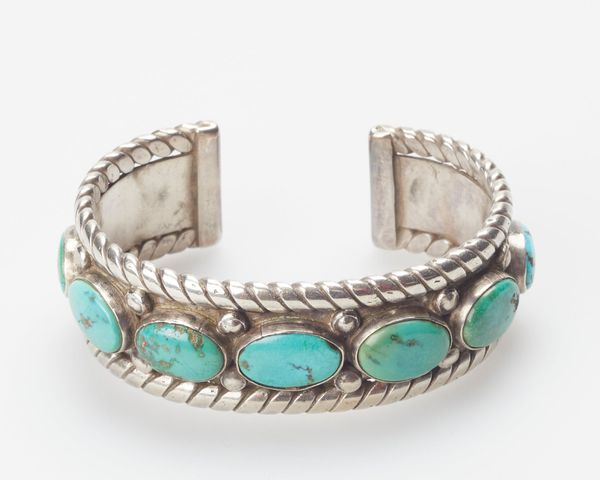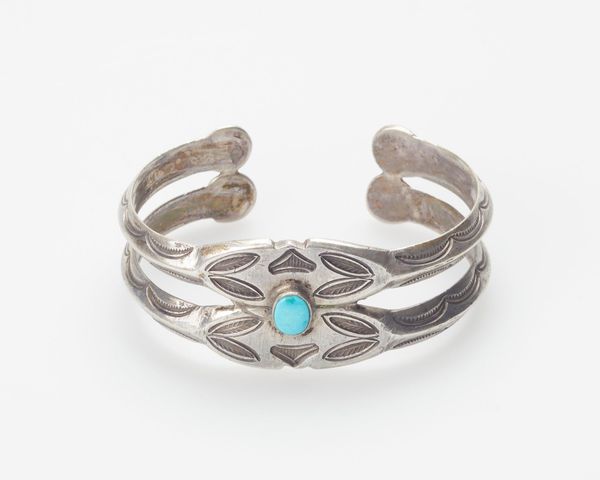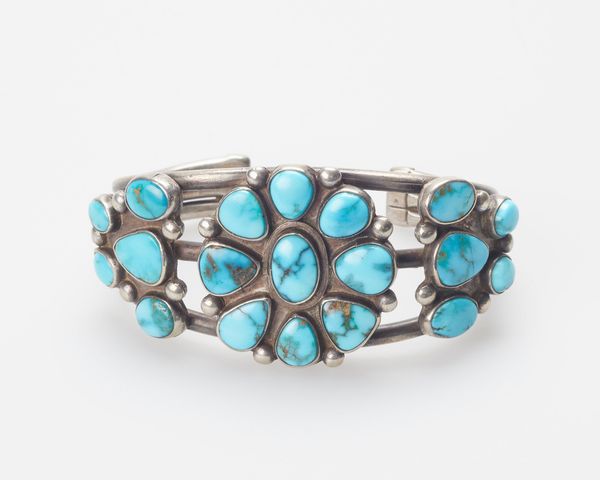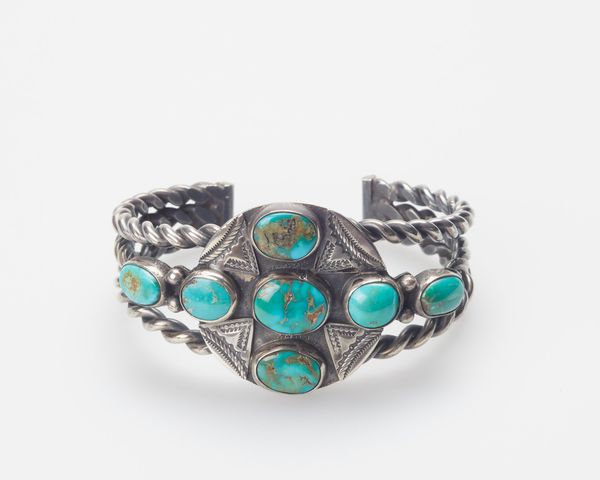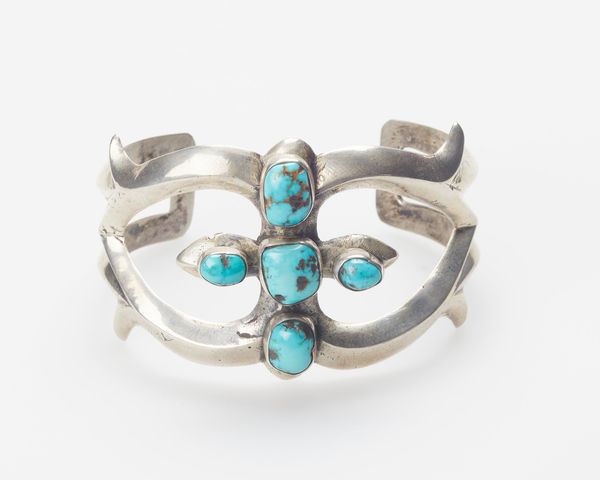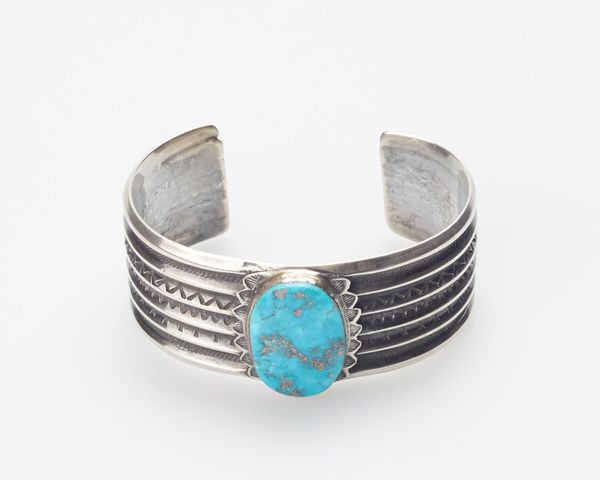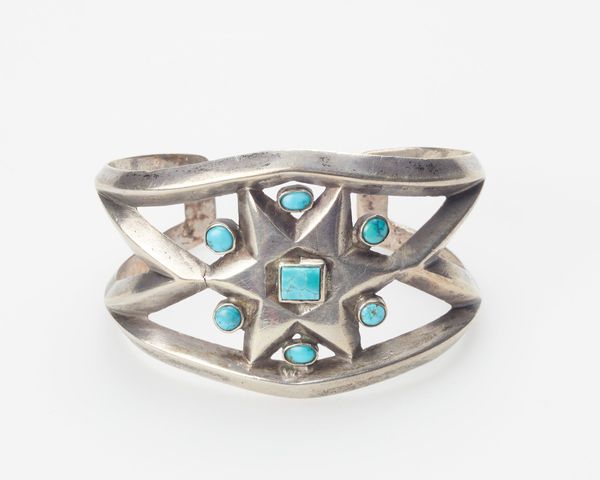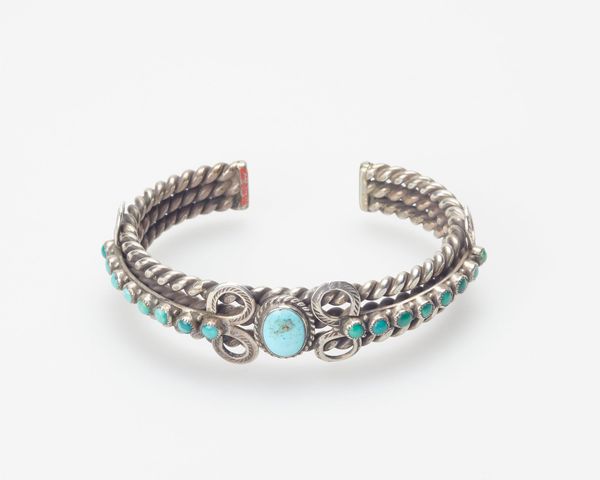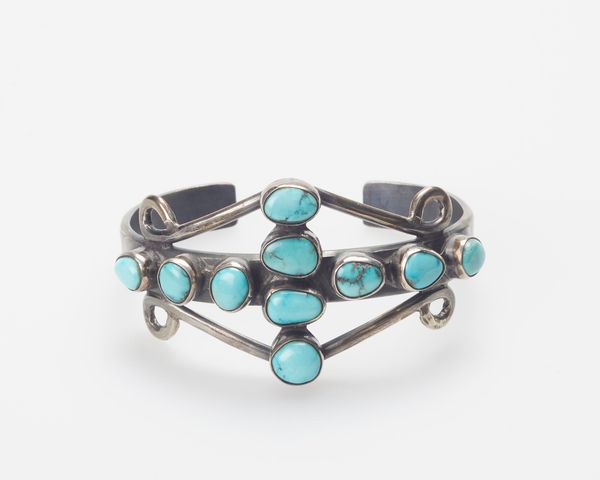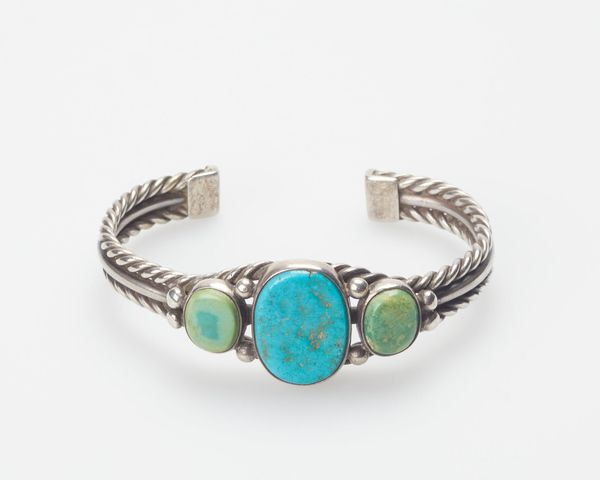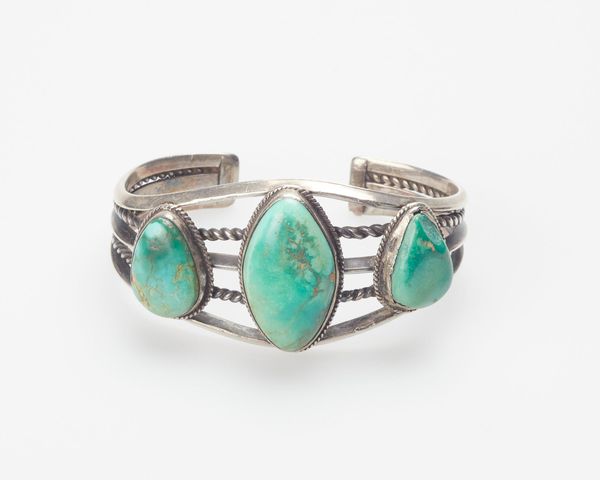
silver, metal
#
silver
#
metal
#
indigenous-americas
Dimensions: 2 5/8 x 1 1/2 in. (6.67 x 3.81 cm)
Copyright: Public Domain
Curator: Before us is a captivating bracelet from the Minneapolis Institute of Art. It dates back to around 1900 and was created by a Navajo artist. The materials are primarily silver and these bright turquoise stones. Editor: It strikes me immediately as incredibly light, visually. The silver filigree creates this delicate network. Is this typical of Navajo work from that period? Curator: Yes, you are picking up on significant aspects. This openwork design, juxtaposed with those strong horizontal bands, demonstrates a departure from earlier, heavier styles. The turquoise is central here too. It evokes water, sky. And the configuration of the stones themselves hints at clan symbols. We have to remember, this wasn’t simply adornment; it represented identity. Editor: The placement of each individual turquoise stone almost has an architectural sensibility. You're right, it really brings this piece to life. Curator: Consider too how silver itself entered Navajo culture. Initially, it came from melted down coins, and then, increasingly, Anglo silver became available. But Navajo artisans were quick to recast what they adopted, shaping these elements to echo their world view. It’s a story of resistance, adaptation, and aesthetic power all captured in this object. The visual balance here seems rooted in ideas of cosmic balance; each design and choice in the design conveys meaning about connection. Editor: Fascinating. So, in essence, each bend of the silver and positioning of the turquoise signifies something deeper? Almost a wearable cosmology? I look at the combination of simple horizontal lines with curved elements and how it feels like a structured harmony. Curator: Precisely. In such Indigenous cultures of the Americas, the separation of art from other fields like religion and daily living wouldn't have made much sense at all. As a Formalist, do you not feel in its patterns something ancient, reaching far beyond merely decoration? Editor: Perhaps. To me, what stands out the most is that, with an eye on pure aesthetics, it exemplifies visual lightness in a weighty medium. And also, there’s just something lovely in its quiet precision that elevates the human touch behind its making. Curator: The interplay of those formal concerns—lightness, balance—reflect deeper spiritual principles at play, all radiating out from a culture deeply interconnected with nature and symbol. Editor: Ultimately, a powerful intersection of aesthetic brilliance and significant cultural meaning.
Comments
No comments
Be the first to comment and join the conversation on the ultimate creative platform.


